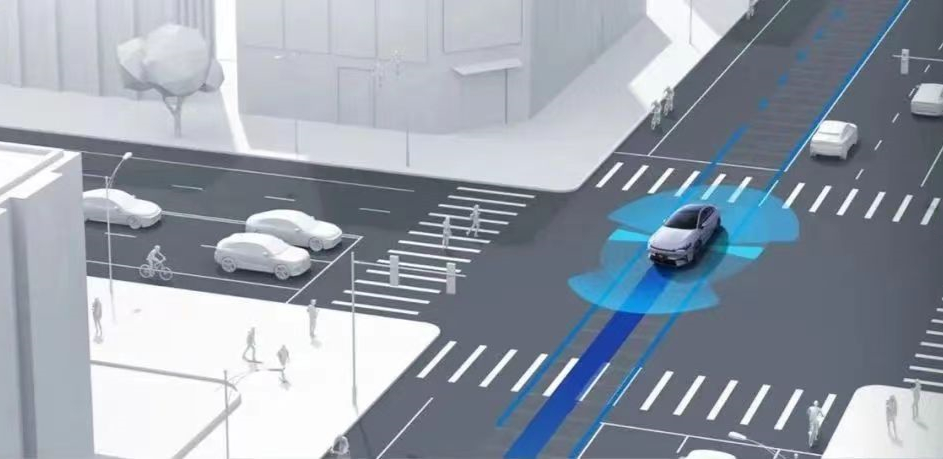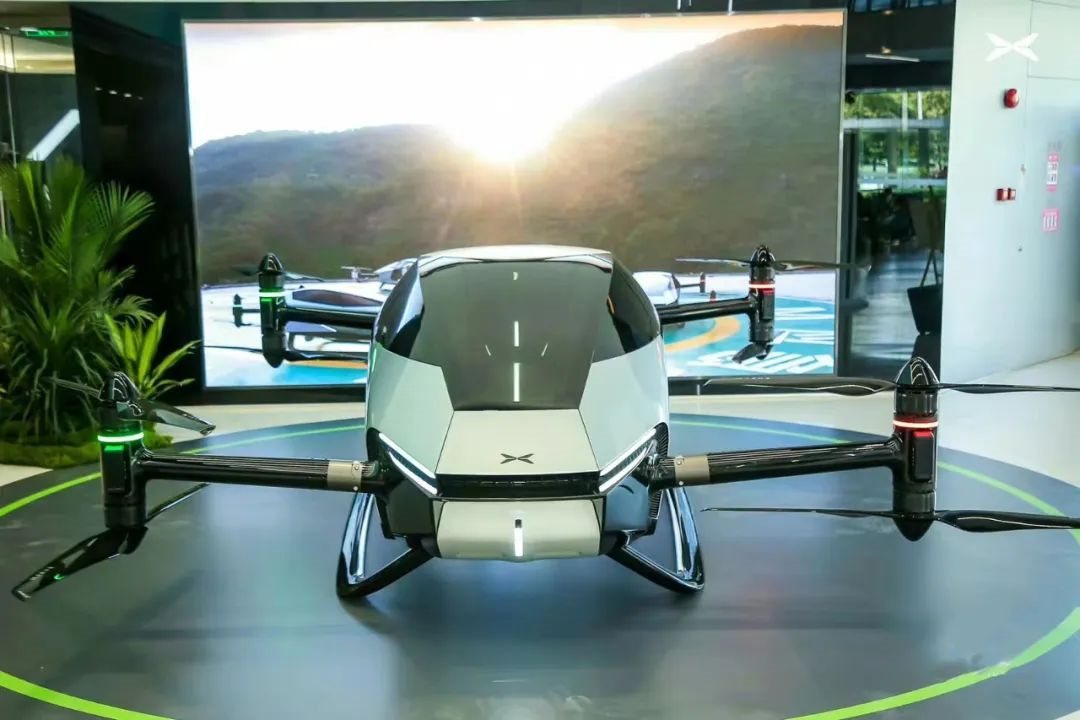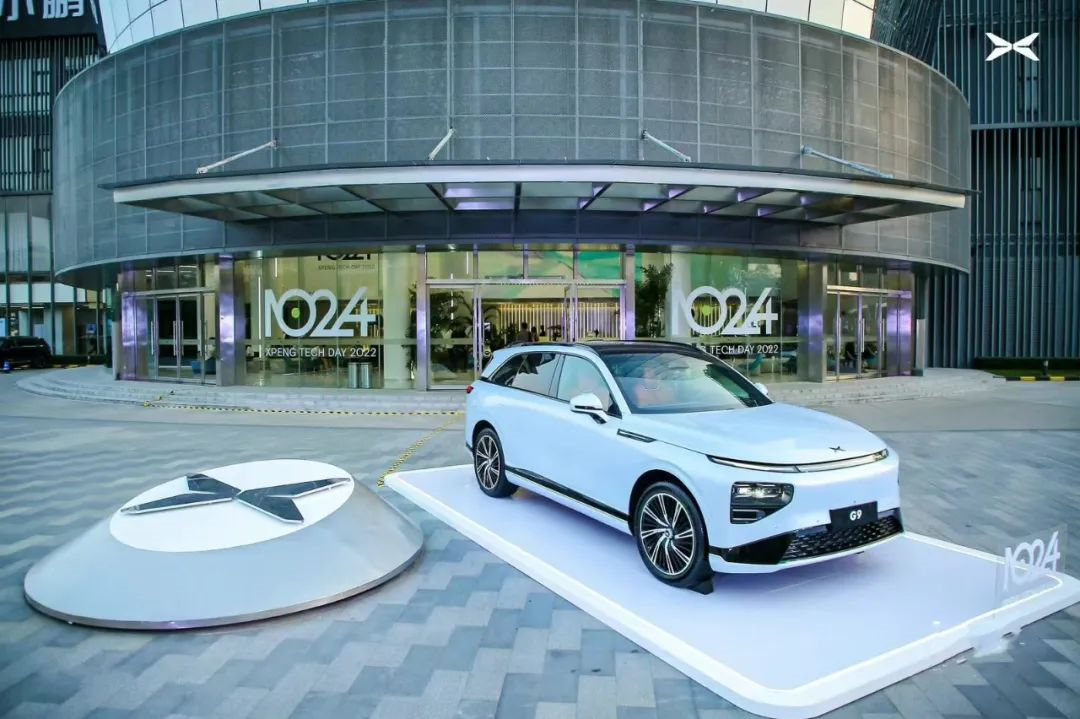Report by: Sun Mingzhi
Edited by: Wu Xianzhi
On October 24th, 2022, XPeng Motors launched its annual “1024 Technology Day” as promised. As before, XPeng Motors shared the company’s latest research achievements and future development plans with us during this event.
“We have made many interesting explorations” is what He XPeng talked about the most during this 1024 Technology Day, which highlights XPeng Motors’ persistence in technological exploration and showcases the company’s technological attributes.
“From foresight to beyond” is the theme of this year’s 1024 Technology Day. XPeng Motors exhibited their current technological development progress and plans for mass production in four areas of intelligence: intelligent driving, intelligent interaction, intelligent robots, and flying cars.
Starting the second half game for assisted driving
In the field of intelligent driving, XPeng Motors shared their technical ideas for their own NGP (Navigation Guided Pilot) with the aim of city-level advanced assisted driving. They also demonstrated the advantages of their new XNGP intelligent assisted driving system in software architecture, AI and data systems.
Dr. Wu Xinzhou, Vice President of Automatic Driving at XPeng Motors, emphasized the importance of urban scenarios for the development of intelligent driving. According to the data he released, 71% of user driving mileage is on city roads, 90% of users’ driving time is in the city, and 100% of users pass through city roads. Therefore, urban scenes are high-frequency scenarios for users and cannot be avoided.
Currently, the weekly user penetration rate of city NGP has reached 84%, the mileage penetration rate has reached 63%, the pass-through efficiency is close to that of human drivers at 90%, and the number of passive takeovers per 100 kilometers is only 0.6 times, which is similar to the data of the high-speed NGP.However, NGP for cities is just a milestone achievement for XPeng Motors. According to He XPeng, most car giants in the market have already acquired the capability of single-scenario assisted driving. In the years 2023-2025, they will move on to the second half of assisted driving – full-scenario assisted driving. Following that, XPeng Motors will develop towards full automation and unmanned driving.
Regarding full-scenario assisted driving, XPeng Motors has launched the XNGP intelligent driving assistance system. According to the official statement, the XNGP system does not rely on high-precision maps and can be used throughout the country on various sections, covering scenes such as daily commuting, seamless access to high-speed roads, urban areas, underground parking lots, etc.
To achieve the function, XPeng Motors has made significant upgrades to hardware, adopting the 508TOP computing chip, dual LiDAR, 8 million-pixel high-definition camera. In terms of software, it debuts a new generation of perception architecture, XNet, to achieve fully closed-loop, self-growing AI and data systems.
XNet can be combined with the entire vehicle sensor, with strong static environment perception capabilities, and can generate high-precision maps in real-time. Furthermore, it has improved its capability to detect dynamic environments, increased the success rate of vehicles switching lanes, and can more accurately identify the speed and intention of dynamic objects, with motion perception redundancy- thus having higher safety.
XPeng Motors also developed a fully automatic annotation system to reduce data processing time, improve efficiency, and achieve higher data quality with more comprehensive information.

At the same time, XPeng Motors has built China’s largest autonomous driving smart computing center, “Fuyao,” based on Aliyun’s intelligent computing platform, with a computing power of up to 600 PFlops, providing an efficiency improvement of up to 602 times the maximum training efficiency.In addition, XPeng Motors has launched a fully closed-loop, self-growing AI and data system, which can quickly iterate and train through actual or simulated data, solving more than 1,000 corner cases and achieving a 95% reduction in accidents related to high-speed NGP within a year.
Wu Xinzhou also explained XPeng’s plans for assisted driving during the speech. By the first half of 2023, in addition to existing high-speed NGP, memory parking, LCC, and intelligent parking functions, G9 MAX models will be delivered nationwide with the ability to recognize red, green lights and straight-through intersections. The city NGP will cover Guangzhou, Shenzhen, and Shanghai.
By the second half of 2023, the city will open up most functions such as lane changing, overtaking, left and right turns. By 2024, full-scene assisted driving functions will be achieved, and intelligent navigation driving from parking space to parking space will become a reality.
Moreover, G9 became the first mass production model to pass the automatic driving closed road test and obtained a license for intelligent networked vehicle road testing. It is expected that XPeng will open its own Robotaxi in 2023-2024, which can complete passenger pick-up and drop-off functions with a safety officer present. XPeng achieves a closed loop of data and capabilities through dual-line parallelism of automatic driving and high-level assisted driving.
XPeng also made great improvements in intelligent voice technology by upgrading its full-scene intelligent voice to version 2.0 within two years. XPeng has applied MIMO multi-sound zone technology to the in-car voice system for the first time, making the system always on and allowing users to directly issue commands without using a wake-up word. The system’s response time has also been significantly improved, taking only 245ms from wake-up to interface feedback and less than 700ms for voice feedback, with a delay of less than 1s.The vehicle also supports four commands at the same time, and passengers in four positions can give instructions to the voice assistant. The voice assistant can accurately recognize different passengers’ commands.
The G9 also features local conversation capabilities and has the ability to control over 600 vehicle functions in weak or no network conditions.
The implementation of these functions mainly relies on XPeng Motors’ self-developed second-generation voice architecture. In the future, XPeng Motors’ voice assistant will develop toward naturalization, personalization, and sentimentalization. XPeng Motors also supports custom modes where users can edit their own scenes or choose from fixed templates.
The Further Evolution of Smart Robots and Flying Cars
At the end of the event, He XPeng introduced the development of smart robots and flying cars. In addition, XPeng Motors CEO He XPeng also explained the research and development progress of smart robots and flying cars.
He XPeng said that smart robots have evolved from a laboratory state to a near-mass production state. In the past year, the company team has added AR projection functions to smart robots and developed them from multiple aspects, such as flexible fabric joints, liquid silicone skin, EVA supercritical foam soles, high-value sound systems, six-axis mechanical arms, and lightweight skeletons. This reduces the noise emitted by the product during movement and improves its obstacle avoidance ability in narrow environments.
XPeng Motors’ core development capabilities in system ability, human-machine interaction, power system, automatic driving, and vehicle development system provide certain support for the development of smart robots.
He XPeng said that a new generation of smart robots will be launched next year.
Regarding flying cars, He XPeng said that there are certain shortcomings in the flying car concept model released in 2021 and that mass production cannot be achieved. Therefore, a brand-new flying car was developed.The new flying car is similar to a car with a roof-mounted travel case while stationary, except that the “travel case” of the flying car contains four folding propellers. During takeoff, four mechanical arms extend from the car and the propellers unfold from the arms’ ends.

According to He XPeng, the new flying car is named X3 internally, weighs approximately 2 tons, and is bigger than the G9, carrying up to two people. However, the car’s range and carrying capacity are still relatively weak.
In terms of driving, XPeng Motors has relocated the steering wheel from the car to the flying vehicle and added a push rod that can control its direction by the steering wheel, making its overall operation similar to that of driving a car.
Currently, the X3 has completed its first internal test flight smoothly. However, it is still in the experimental stage, and its specific production date has yet to be determined.
Final Thoughts
With the gradual development of electric and intelligent cars, the business scope of automobile companies has expanded beyond just vehicle manufacturing. Due to its previous diversified layout, XPeng Motors’ business scope will become increasingly broad.
Whether it’s an intelligent robot or a flying car, they are the latest technological achievements of XPeng Motors and may be more in the future as carriers showcasing its technological achievements.
This article is a translation by ChatGPT of a Chinese report from 42HOW. If you have any questions about it, please email bd@42how.com.
